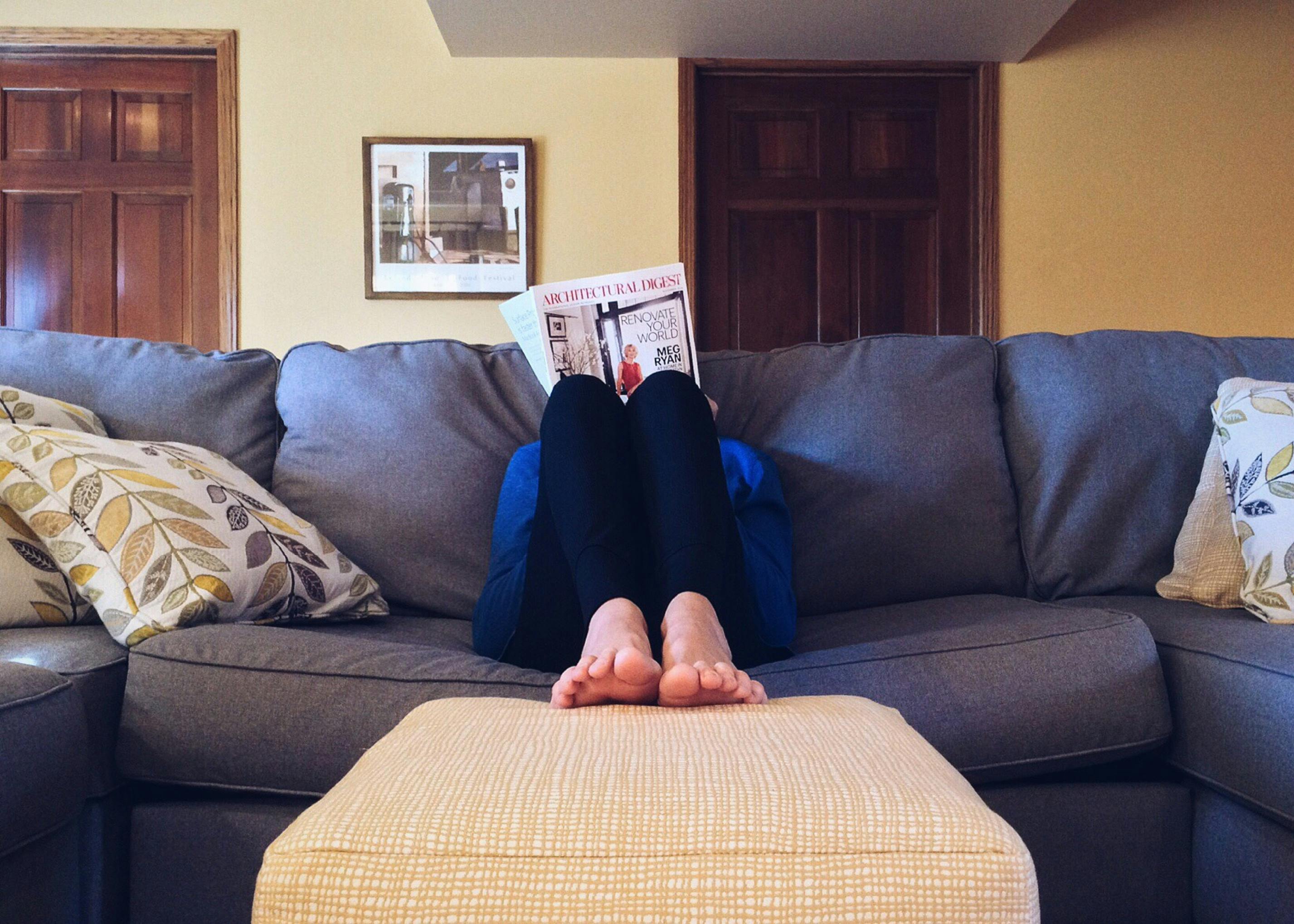
Image Source: Pexels
House settling is a natural process that occurs over time as the soil beneath a home’s foundation shifts and changes. All houses experience some degree of settling, but it is important to recognize when normal settling has become a cause for concern. The primary reasons for house settling are changes in soil moisture content, soil compaction, and the weight of the structure. Soil can expand and contract due to fluctuations in moisture levels, leading to shifts in the foundation. Additionally, soil compaction can occur if the ground was not adequately prepared during the construction process, causing the house to settle unevenly.
Various factors can contribute to house settling, including climate conditions, tree roots, plumbing leaks, and even the type of soil on which the house is built. In regions with extreme temperature variations, the ground can freeze and thaw, causing the soil to expand and contract. Tree roots can grow beneath the foundation, displacing the soil and causing movement. Plumbing leaks can lead to increased moisture content in the soil, resulting in expansion and contraction. Finally, certain types of soil, such as clay, are more susceptible to expansion and contraction, increasing the likelihood of house settling.
It is crucial to understand the causes of house settling to address the issue effectively and implement preventive measures. By monitoring changes in your home and recognizing the signs of house settling, you can take action to protect your investment and maintain the structural integrity of your home.
Identifying Common Signs of House Settling
Being aware of the common signs of house settling is essential in detecting potential issues early on. This allows you to address the problem before it worsens and causes significant structural damage. Some visible signs of house settling include:
- Cracks in walls, ceilings, or floors: These are often the most noticeable signs of house settling. Cracks can appear both on the interior and exterior of the home and may vary in size and severity.
- Sticking doors and windows: As the house settles, door and window frames can become misaligned, making them difficult to open or close.
- Sloping floors: Uneven settling can cause floors to slope, creating an unlevel surface.
- Gaps between walls and floors or ceilings: Settling can result in gaps forming between the walls and adjacent surfaces, such as floors or ceilings.
- Bowed or leaning walls: In extreme cases, house settling can cause walls to bow or lean, indicating significant structural issues.
By keeping an eye out for these signs, you can quickly identify and address house settling problems before they escalate.
Types of Settling Cracks in Houses
There are several types of settling cracks that can occur in houses, each with its own potential impact on the home’s structure. These include:
- Hairline cracks: These are small, thin cracks that usually appear in the early stages of house settling. They are often cosmetic in nature and can be easily repaired.
- Vertical cracks: Vertical cracks are more concerning than hairline cracks, as they can indicate more significant foundation issues. They typically appear near the corners of the home and may widen over time.
- Stair-step cracks: These cracks resemble stair steps and usually occur in brick or concrete block walls. Stair-step cracks can be a sign of significant foundation movement and may require professional repair.
- Horizontal cracks: Horizontal cracks are the most severe type of settling crack and often indicate significant structural issues. They can be found in both interior and exterior walls and may be accompanied by bowing or leaning.
Understanding the different types of settling cracks can help you assess the severity of the problem and determine the most appropriate course of action for repair.
The Impact of House Settling on Your Home’s Structure
House settling can have several negative effects on your home’s structure. In addition to causing cosmetic damage, such as cracks in walls, ceilings, and floors, it can also lead to more serious structural issues. As the foundation shifts, it can compromise the stability of the entire structure, potentially causing walls to bow or lean, floors to slope, and doors and windows to become misaligned.
In some cases, house settling can also result in damage to plumbing, electrical, and HVAC systems. Pipes can crack or become dislodged, leading to leaks and water damage. Electrical wiring can become strained, increasing the risk of electrical fires. And HVAC ducts can become misaligned, reducing the efficiency of your heating and cooling system.
Addressing house settling issues promptly is essential in preventing further damage to your home’s structure and maintaining a safe and comfortable living environment.
Preventive Measures for House Settling
While some degree of house settling is inevitable, there are several steps you can take to minimize its impact on your home. These preventive measures include:
- Proper site preparation: Ensuring that the ground is adequately prepared before construction can help reduce the risk of uneven settling. This includes removing any organic material, such as tree roots or vegetation, and ensuring that the soil is properly compacted.
- Installing proper drainage: Proper drainage is essential in preventing soil erosion and maintaining consistent moisture levels in the soil. This includes installing gutters and downspouts to direct water away from the foundation and grading the landscape to promote proper water runoff.
- Monitoring tree growth: Be mindful of tree roots growing near your home’s foundation, as they can displace soil and contribute to house settling. Regularly inspect and trim tree roots as needed to prevent potential issues.
- Addressing plumbing leaks promptly: Plumbing leaks can cause increased moisture content in the soil, leading to expansion and contraction. Regularly inspect your plumbing system and address any leaks immediately to prevent soil movement.
- Maintaining consistent indoor humidity levels: Fluctuations in indoor humidity can contribute to the expansion and contraction of wood framing, which can lead to house settling. Use a humidifier or dehumidifier as needed to maintain consistent humidity levels in your home.
By implementing these preventive measures, you can help protect your home from the negative effects of house settling and maintain its structural integrity.
Expert Solutions for Repairing House Settling Cracks
When it comes to repairing house settling cracks, there are several expert solutions available to address the issue effectively. These include:
- Crack injection: This method involves injecting a high-quality epoxy or polyurethane foam into the crack to seal and stabilize it. Crack injection is typically recommended for minor to moderate cracks and can help prevent further movement and damage.
- Underpinning: Underpinning is a more extensive repair method that involves strengthening the foundation to address significant settling issues. This process can include installing piers, piles, or helical screws beneath the existing foundation to provide additional support and stabilize the structure.
- Wall anchors: Wall anchors can be used to repair bowed or leaning walls caused by house settling. These anchors are installed into the ground outside of the affected wall and connected to the interior wall with steel rods. The rods are then tightened to pull the wall back into place and stabilize the structure.
- Carbon fiber reinforcement: Carbon fiber reinforcement is a lightweight, yet strong material that can be used to repair cracked or bowed walls. The carbon fiber is applied directly to the affected area, providing additional support and preventing further movement.
- Slabjacking: Slabjacking is a method used to lift and level settled concrete slabs, such as floors, driveways, or sidewalks. A specialized cement mixture is injected beneath the slab, lifting it back into place and filling any voids caused by settling.
By consulting with a professional contractor or foundation repair specialist, you can determine the most appropriate solution for repairing house settling cracks and protecting your home’s structure.
DIY vs Professional Repair for House Settling Cracks
Depending on the severity of the house settling cracks and your level of expertise, you may be able to perform some repairs yourself. However, it is essential to carefully assess the situation and consult with a professional if you have any doubts about your ability to handle the repairs. While DIY repairs might be sufficient for minor cosmetic cracks, more significant structural issues should always be addressed by a professional.
Professional contractors and foundation repair specialists have the experience, knowledge, and equipment needed to accurately assess the cause and severity of house settling cracks.They can also recommend the most appropriate repair method and ensure that the repairs are performed correctly to prevent further damage.
Additionally, attempting to perform repairs yourself can be dangerous and potentially cause more harm than good. For example, using the wrong materials or methods can worsen the problem, leading to more extensive and expensive repairs down the line. Working with a professional ensures that the repairs are performed safely and effectively, giving you peace of mind and protecting your investment.
Long-Term Solutions for House Settling Issues
While addressing house settling cracks is an essential step in protecting your home’s structure, it is also essential to implement long-term solutions to prevent future settling issues. These solutions include:
- Soil stabilization: Soil stabilization involves treating the soil beneath your home’s foundation to prevent further settling. This can include injecting a soil stabilizing compound into the soil or installing a moisture barrier to prevent changes in soil moisture content.
- Foundation reinforcement: Reinforcing your home’s foundation can help prevent future settling issues. This can include installing additional support beams or reinforcing the foundation with steel or carbon fiber.
- Regular inspections: Regularly inspecting your home for signs of settling can help you catch potential issues early on and address them promptly. This can include monitoring cracks for changes in size or severity and inspecting doors and windows for misalignment.
By implementing these long-term solutions, you can help protect your home from future settling issues and maintain its structural integrity.
Costs Associated with Repairing House Settling Cracks
The cost of repairing house settling cracks can vary significantly depending on the severity of the issue and the chosen repair method. Minor cosmetic cracks can typically be repaired for a few hundred dollars, while more significant structural issues can cost several thousand dollars or more.
Factors that can impact the cost of repairs include the size and severity of the settling cracks, the chosen repair method, and the location of the cracks. Additionally, if the settling has caused damage to plumbing, electrical, or HVAC systems, these repairs will also need to be factored into the cost.
While the cost of repairing house settling cracks can be significant, it is important to address the issue promptly to prevent further damage and protect your investment. Consulting with a professional contractor or foundation repair specialist can help you determine the most cost-effective and appropriate solution for your specific situation.
Conclusion: Taking Action Against House Settling Problems
House settling is a natural process that occurs over time, but it is important to recognize when normal settling has become a cause for concern. By understanding the causes of house settling, identifying the signs of settling cracks, and implementing preventive measures, you can protect your home’s structure and maintain a safe and comfortable living environment.
When it comes to repairing house settling cracks, it is essential to consult with a professional contractor or foundation repair specialist to ensure that the repairs are performed safely and effectively. Additionally, implementing long-term solutions can help prevent future settling issues and protect your investment.
If you suspect that your home is experiencing settling issues, take action promptly to address the problem and protect your home’s structure. By working with a professional and implementing preventive measures, you can ensure that your home remains a safe and comfortable place to live for years to come.

